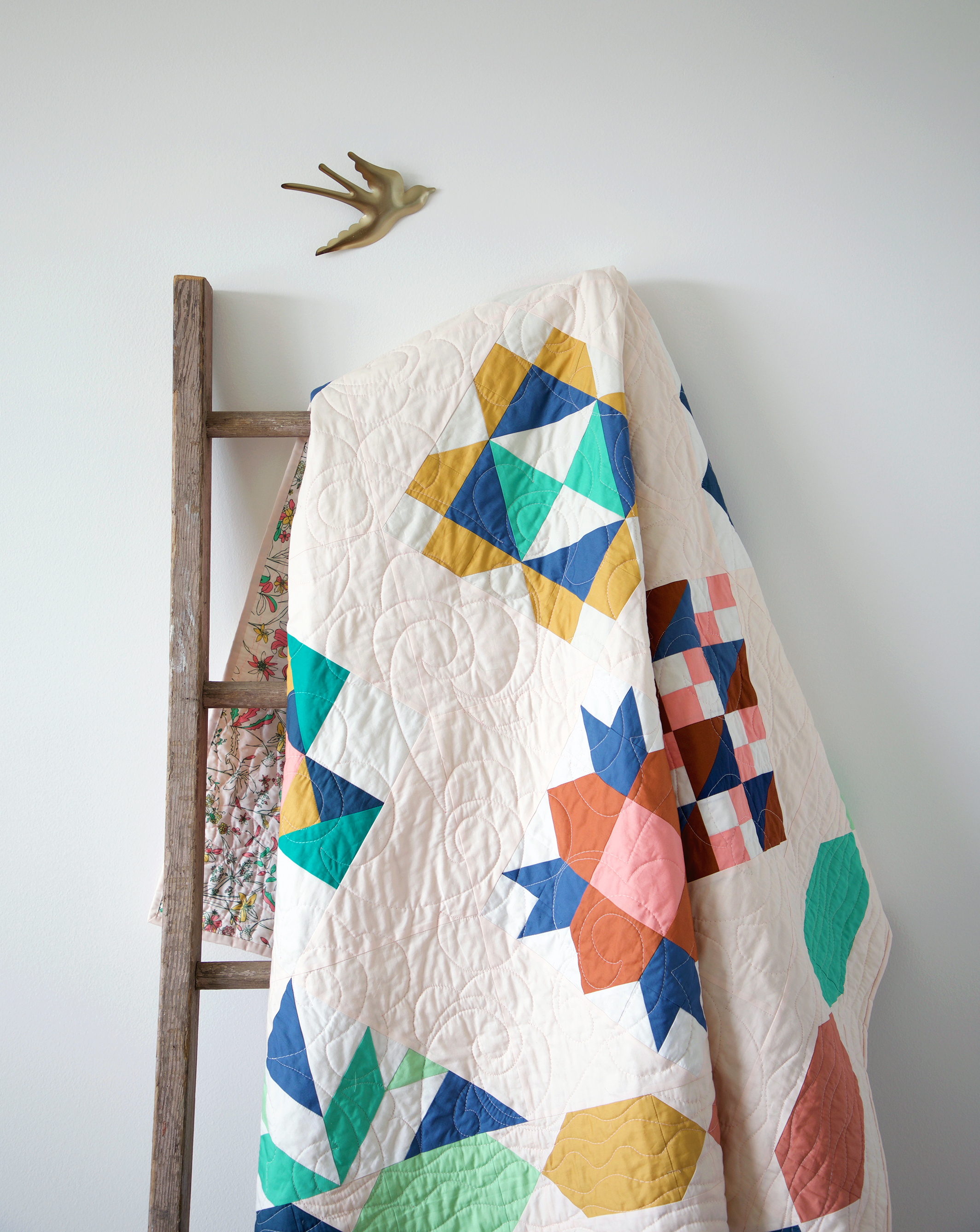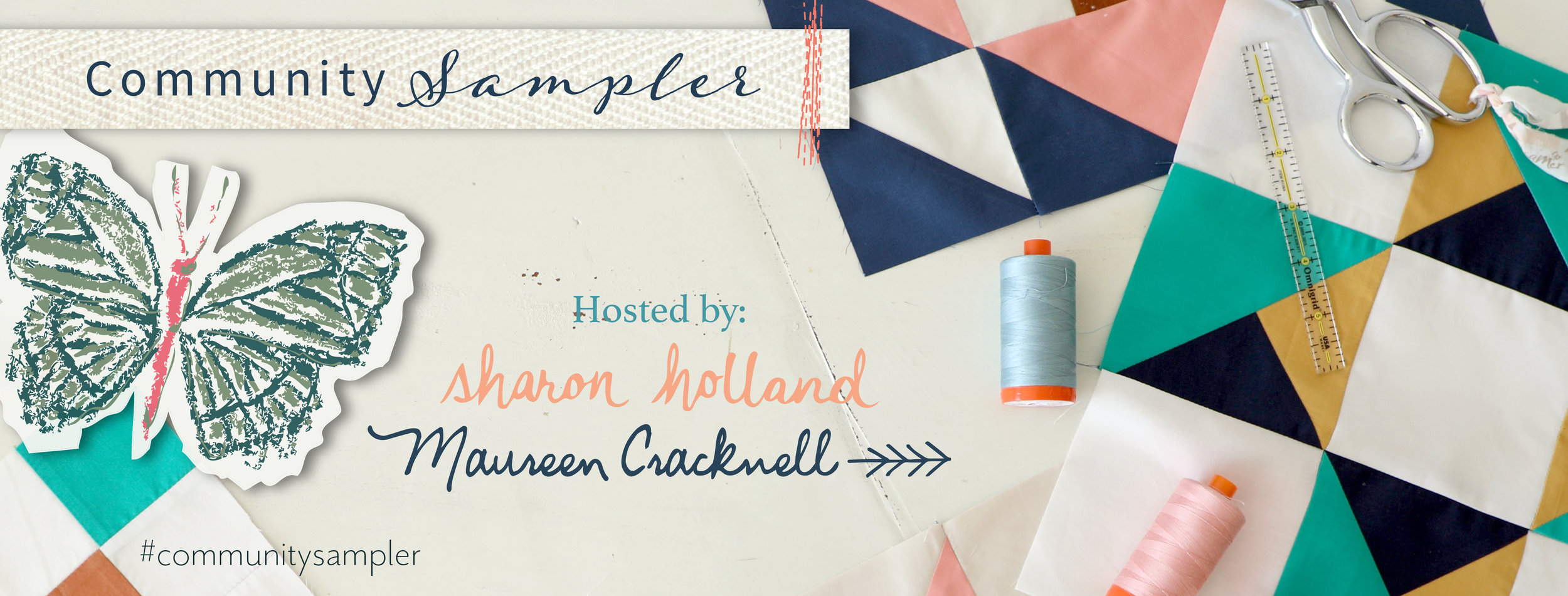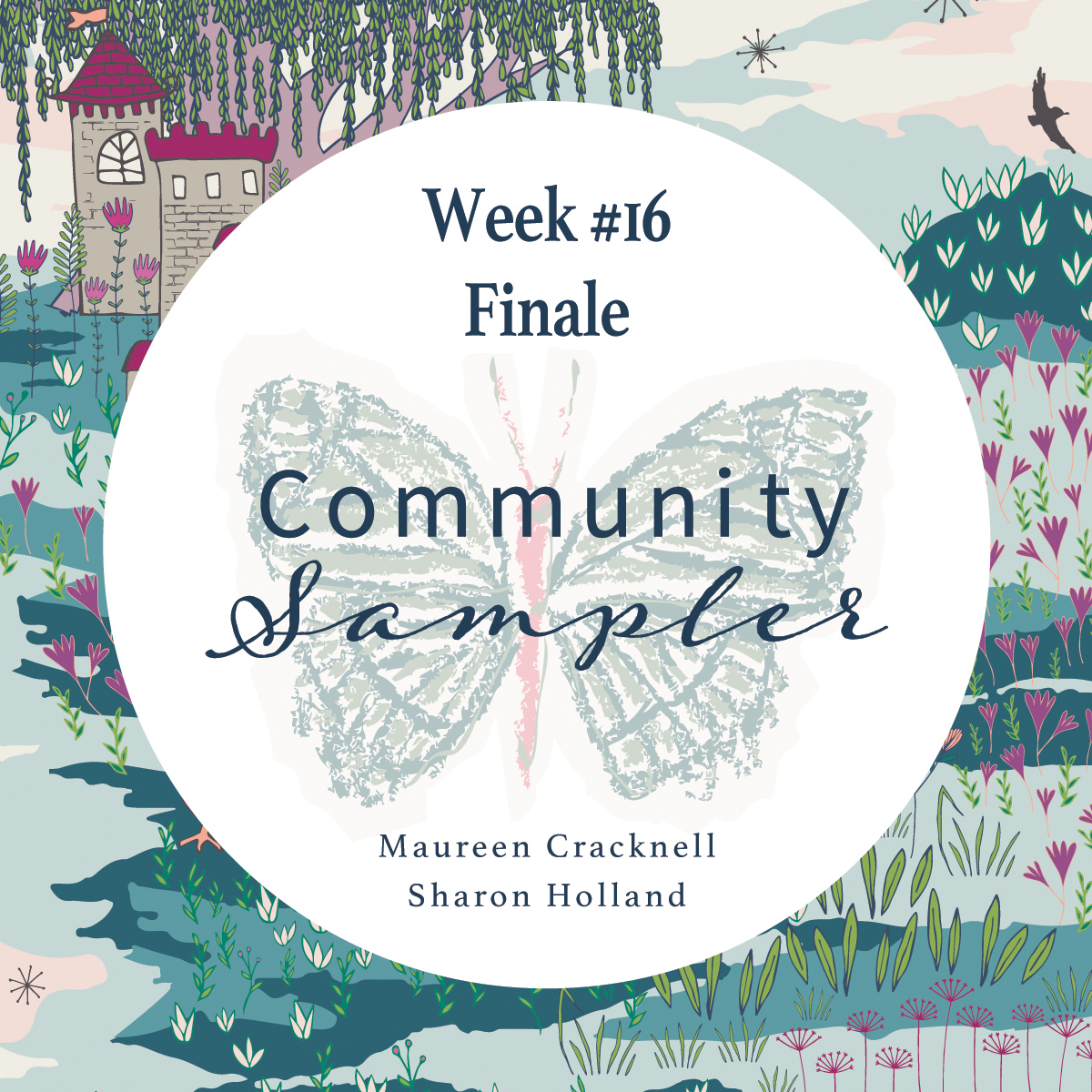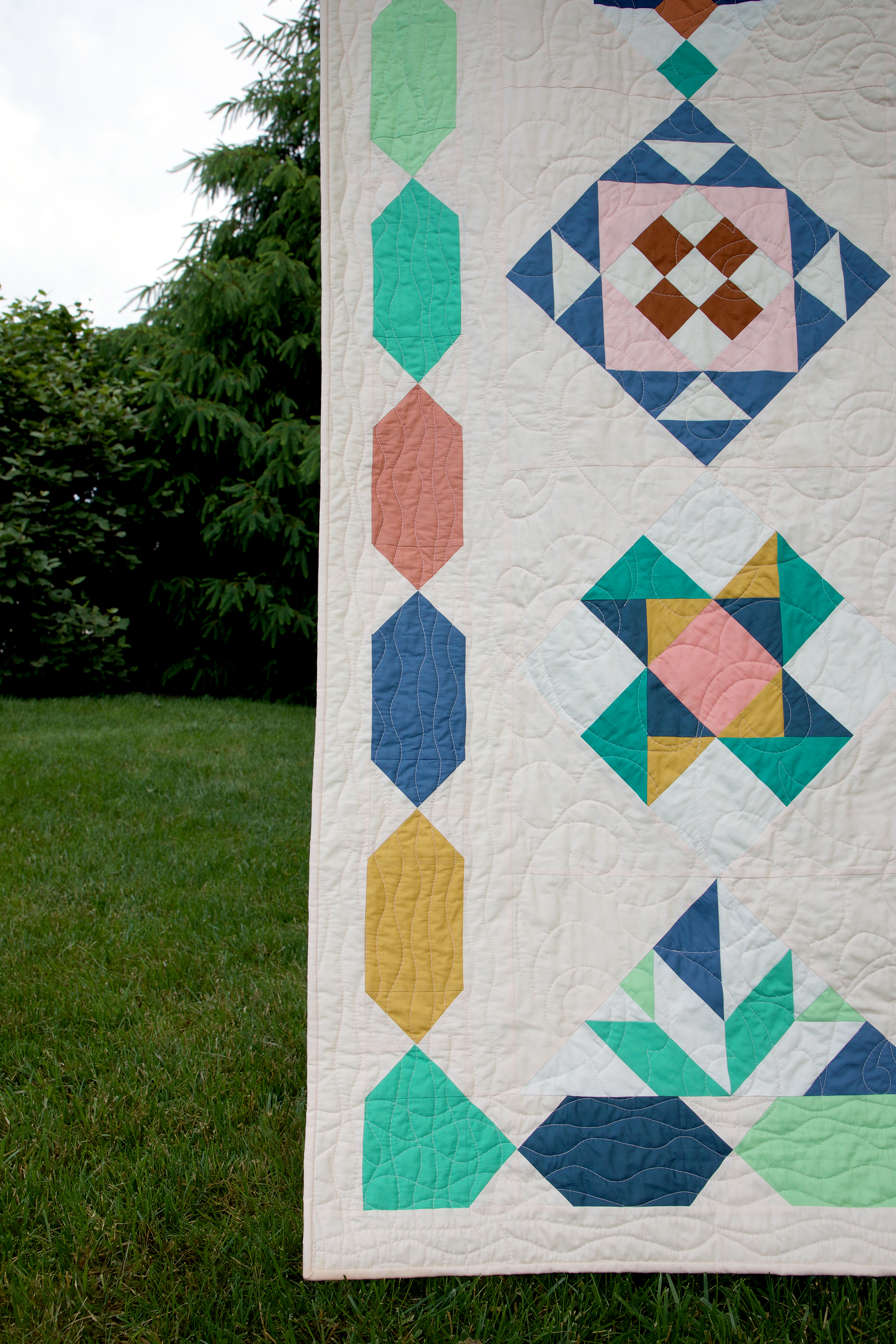Community Sampler Week #16
It's finale week for the Community Sampler. I know many of you will not have your tops finished or quilted this week but both Maureen and I will be watching for you to post pictures of the finished quilts in the weeks and months ahead. Many are still posting their finished Sewcial Bee Samplers from last year's sew along so it's never too late to complete a quilt.
Be sure to use the #CommunitySampler hashtag when posting your Community Sampler blocks and quilts to Instagram and tag both my @sharonhollanddesigns and @maureencracknell so we don't miss any of your beautiful work!
It's been a real pleasure to co-host the Community Sampler. We've seen many returning makers from our last years Sewcial Bee Sampler and loads of new friends joining in this year's sew along. I hope you've learned some new patchwork skills or are continuing to improve upon what you already know. All the blocks and quilts I've seen are so well made and have beautiful fabric selection. Thank you so much for sewing with us!
Surprisingly we still have a few new Makers joining our sew along at this late point. If you are just joining us, pick up the Introduction PDF on the Sew Along page and you'll get a material list along with coloring pages so you can get started planning your quilt. Then, work your way through the first Community Sampler post to the present and take advantage of the in-blog tutorials for the different patchwork techniques used throughout the Community Sampler. Both Maureen and I will leave all the Community Sampler downloads up on our blogs for you to download long after this event is done. Also, check out the #Community Sampler hashtag on Instagram, you'll see an amazing array of beautiful blocks as inspiration overload! Soon, you'll be seeing finished Community Sampler quilts too!
There's nothing new to download this week and no tutorials--this week's post is purely show and tell for me to blog about my finished sampler and the design inspiration behind how a chose to machine quilt my sampler.
Last Wednesday's post showed how I had my top pieced and my backing fabric of Untamed Beauty Daybreak from my new Signature collection for Art Gallery Fabrics all selected and cut. The following day (Thursday) my husband and I took off for a trip to New York to visit our youngest son.
We had a wonderful time visiting the city and packed an unbelievable amount of sight seeing into four days. We averaged 8 miles a day on foot and I've no idea how many more miles we traveled each day by subway, bus, Uber, or boat. We were Uptown, Downtown, and all around that town!
The Cloisters in New York City
On Sunday we visited the Cloisters (a branch of the Metropolitan Museum of Art), which is a medieval castle housing exclusively art from the Middle Ages. Situated overlooking the Hudson River in northern Manhattan, it's a specular place to visit.
The Judy Black Garden in the Cuxa Cloister
I loved the building and the amazing artifacts from the Middle Ages. We were lucky to visit the Metropolitan Museum of Art (The Met) and the Cloisters while the Heavenly Bodies: Fashion and the Catholic Imagination exhibit was in progress and I found the garment design so imaginative and inspiring.
The Bonnefont Cloister Herb Garden
But my most favorite part of the Cloisters were the serene courtyard gardens.
Garden at the Cloisters
I didn't realize it at the time but the Cloisters courtyard gardens were to be the inspiration for the quilting on my Community Sampler quilt...
We returned home just before lunchtime on Monday and we had already put in a long day because we'd needed to get up at 3 am to get to the airport in time for travel and check-in.
First thing I had to do once home was jump in and get my sampler quilted so I could work on binding that evening and photograph it Tuesday in order to put together this post. While I was spray basting I was thinking of how to quilt it. I sometimes feel like a Quilt Whisperer because I always let the quilt tell me how it should be quilted.
With my trip still fresh in my mind, I thought about those peaceful medival courtyards and thought how the sampler quilt reminded me of a walled garden and the blocks represent how every column had different relief carvings in their capitals.
Thinking of the quilt as an aerial view of the castle, I decided to treat the border and center of the quilt with two different quilting designs.
On the border I did a simple, wavy parallel lines that represent the woven twig fencing seen in the herb gardens.
The center of my quilt is a free-form, stylized organic design to represent the flowers seen in the Cuxa Cloister gardens. I love how my Untamed Beauty print on the back looks right at home in this idea of a garden.
The batting used in my quilt is my favorite, Tuscany Silk Batting from Hobbs Batting. The drape and feel is incredible and it's as easy to handle and quilt as cotton but with much improved properties over cotton.
I chose to bind my quilt in the same Art Gallery Fabrics Pure Elements solid Sweet Macademia as I used for the background of my quilt. This keeps the quilt looking clean on the edge and that soft peach/pink color is the same as used in my Untamed Beauty print. By the binding coordinating with the print on the back, it now becomes a whole cloth look of printed fabric if I wanted to flip the quilt around for multiple looks.
Please visit Maureen's blog to see the beautiful Community Sampler quilt she's making from her gorgeous Art Gallery Fabrics Love Story collection.
COMMUNITY SAMPLER SPONSORS
Don't forget that this Friday's the final Giveaway Friday on the Community Sampler sew along. Because the finale is so big, Maureen and I handle this last giveaway differently than the previous weeks. Maureen will be hosting the blog giveaway with a special grouping of prizes and I will be hosting the Instagram giveaway with a grouping of special prizes. Our posts on Friday will include all the details for prizes and how to enter.
Happy sewing!













